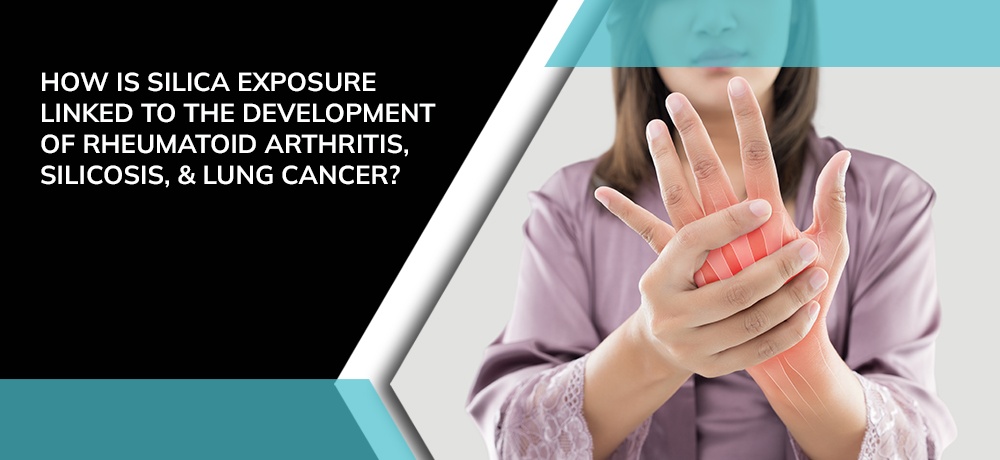HOW IS SILICA EXPOSURE LINKED TO THE DEVELOPMENT OF RHEUMATOID ARTHRITIS, SILICOSIS, & LUNG CANCER?


SILICA EXPOSURE LINKED TO DEVELOPMENT OF RHEUMATOID ARTHRITIS, SILICOSIS, & LUNG CANCER
One of the factors that increase the risk of developing rheumatoid arthritis, silicosis, and lung cancer is prolonged and repeated exposure to silica dust via inhalation. Silica is a chemical compound most commonly found in nature as sand or quartz. It is primarily a component of most types of glass and substances such as concrete.
Silica is in construction materials such as concrete, concrete block, cement, mortar, masonry, tiles, brick, refractory brick, granite, sand, fill dirt, top soil, asphalt-containing rock or stone, and abrasive used for blasting.
Silica is the most common hazard on a work site. Any activity that creates dust can expose workers to airborne silica.


The most common ways to create silica dust are chipping, sawing, grinding, hammering, drilling, crushing, loading, hauling, or dumping, building demolition, power cutting or dressing stone, facade renovation, including tuck-point work, abrasive or hydro blasting, dry sweeping or pressurized air blowing, tunneling, excavating, or earth moving.
We help trade unions, their members and individual workers with its challenges relating to Occupational Disease WSIB claims.

 (416) 222-2213
(416) 222-2213